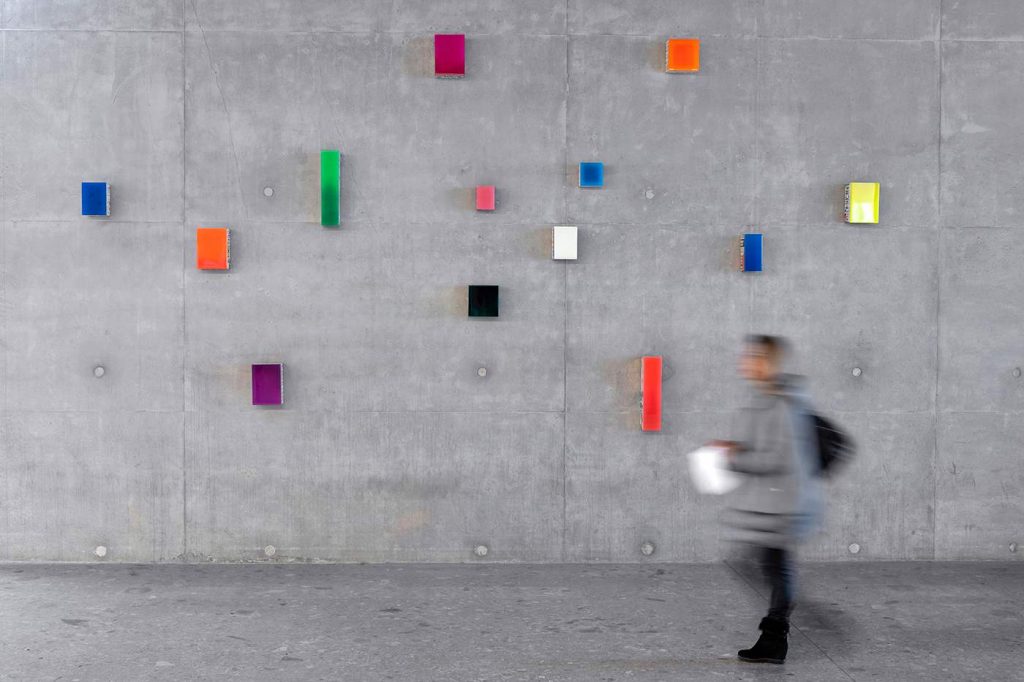Contemporary artist Ivan de Menis talks about his frameworks and process in an interview with Anjali Singh for the Asian Curator.
Please tell us a little about yourself, what brought you to the world of art and how did you start?
When I was a child – around six or seven – I was fascinated by the smell of my father’s oil paints. I remember peeking at the paintbrushes, the spatulas, and the paint on the palette. Everything was so captivating to me. Thinking about it now, I realise those were the moments when I felt most at peace. It felt like I belonged to that world, and all my insecurities would just fade away. I was a very introverted boy, however, I’ve managed to find my own balance through art: my shyness had always played a big role when it came to making decisions, and art became a way to convey my feelings.
I chose to study art and I graduated from the Art Academy of Venice (Accademia di Belle Arti). During my last year there, I was also selected to take part in an art exposition called 40 artisti, 10 gallerie a Venezia (“40 artists, 10 art galleries in Venice”). That’s how my collaboration with an art gallery started.
What is the primary role of an artist? How do you describe yourself in the context of challenging people’s perspectives via your work and art?
I think that an artist should always convey a message through their art, and share what they see and what they feel. Dive deep into those feelings, and then create something. There’s a constant research of the essence that lies between colours and shapes in my artworks. I take a peek at the world and I try to collect what I find – feelings and fragments of it – in order to put them into my works.
What would you call your style? Lets talk about the evolution of your practice over the years. Tell us about your commitment to your current medium.
I think that my artistic research can be summed up in one single word: architecture. During my last years at the Art Academy, I started abandoning any figurative reference to embark in a research of the third dimension, experimenting with the diversification of (perspective) planes and geometry. Year after year, my artworks have become solid volumes, and they have to be observed from different points of view (in a prospective sense). The relation between the surface and the edges of my artwork is to be taken in consideration, too. And the relation that the artwork has with itself and with the space around it is also crucial.
What inspires you? Lets talk about your frameworks, references and process.
Waiting for something and enjoying taking time to do things is what inspires me. I love the routine in my studio, taking pleasure in every single step that leads to the creation of a new work. My artworks are locked in, caged in order to hold the resin in, and after the solidification takes place, they are finally set free.
Think of the biggest professional risk you’ve taken. What helped you take that risk? What is the best piece of advice you’ve received?
The greatest risk I’ve taken was leaving a job that ensured economic safety to devote all my energies to art, putting my family’s wellbeing at risk.
Tell us about your studio, what kind of place is it? Could you describe your usual work-day in the studio?
I’ve always thought of my studio as a safe place for me, where I feel good and I’m surrounded by the things I love; my books, my paints, my artworks, my bie, my coffee, my music. Everything there tells something about my world, about my life. I’ve moved from one studio to another many a time in my life, from my parents’ garage to an old dilapidated house, and I’ve finally managed to create the studio I’ve always wanted, where architecture, design, and art come together and become one. It’s a big space, where I can observe my artworks from a certain distance.
Being able to move around my artworks is crucial to me. I love going to my studio at different times of the day, early in the morning or in the middle of the night… I spend many hours a day in there. My work isn’t fast and explosive: it’s slow and reflexive, it has to live with me for a long time.
Are you more of a studio artist or naturally collaborative by nature? How do you feel about commissions?
I love feeling free, and I dont’ like commissions: I’ve tried to take some before, but I was never as interested in those artworks as I was in the others. I prefer to be inspired by the space around me and create my own artistic path.
What are you working on now? What’s coming next season?
Lately, I’ve been working on artworks that are predominantly three-dimensional. I’m thinking of sculptures in the round, art installations that can amplify the poetry of my works, and stratifications and creations of artworks at different levels.
Before you go – you might like to browse our Artist Interviews. Interviews of artists and outliers on how to be an artist. Contemporary artists on the source of their creative inspiration.
